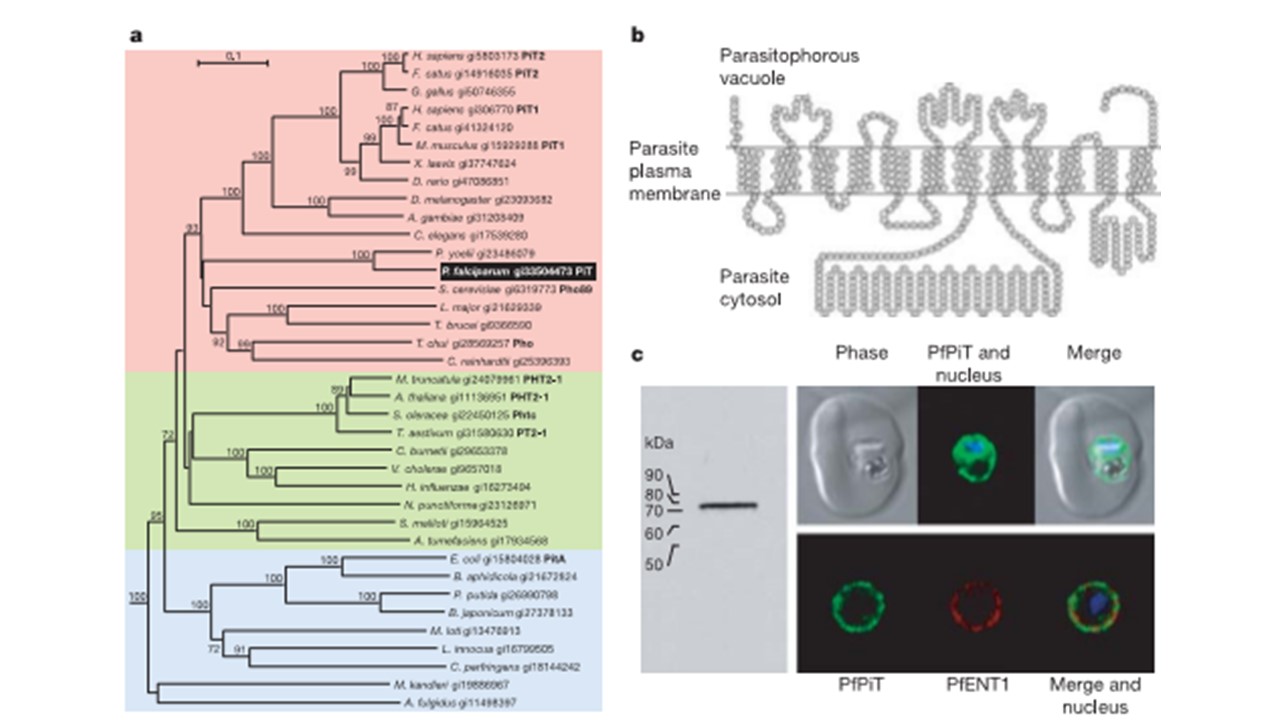The P. falciparum Pi transporter, PfPiT. a, Phylogenetic tree showing relationships between PfPiT and homologues in other organisms. The main branches of the tree are indicated by backgrounds as follows: red, proteins from animals, fungi and protists; green, proteins from plants and bacteria; blue, a second cluster of bacterial proteins and two Archaean proteins. Bootstrap scores of more than 70% are shown on the branches. The scale bar represents the number of substitutions per site for a unit branch length. b, Topographical model of PfPiT derived from hydropathy c, Western blot and immunolocalization of PfPiT in the P. falciparum-infected erythrocyte. Left: western blot analysis of cells expressing PfPiT-HA. A single band corresponding to the predicted size of PfPiT–HA (about 78kDa) was detected. Protein from erythrocytes infected with wild-type 3D7 P. falciparum did not bind the HA antibody (data not shown). Top row of three panels: a P. falciparum-infected erythrocyte expressing PfPiT-HA (green) and nucleus stained with Hoechst 33258 (blue). Within the infected cell, PfPiTHA localizes to the parasite. Lower row of three panels: PfPiT localizes to the parasite surface, colocalizing with PfENT1 (red), a transport protein shown previously to reside on the plasma membrane of the parasite. Saliba KJ, Martin RE, Bröer A, Henry RI, McCarthy CS, Downie MJ, Allen RJ, Mullin KA, McFadden GI, Bröer S, Kirk K. Sodium-dependent uptake of inorganic phosphate by the intracellular malaria parasite. Nature. 2006 443(7111):582-5. PMID: 17006451.
